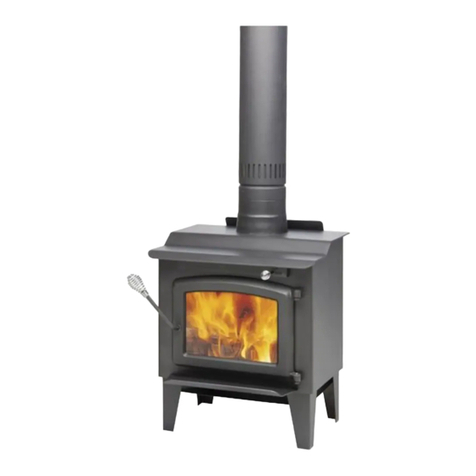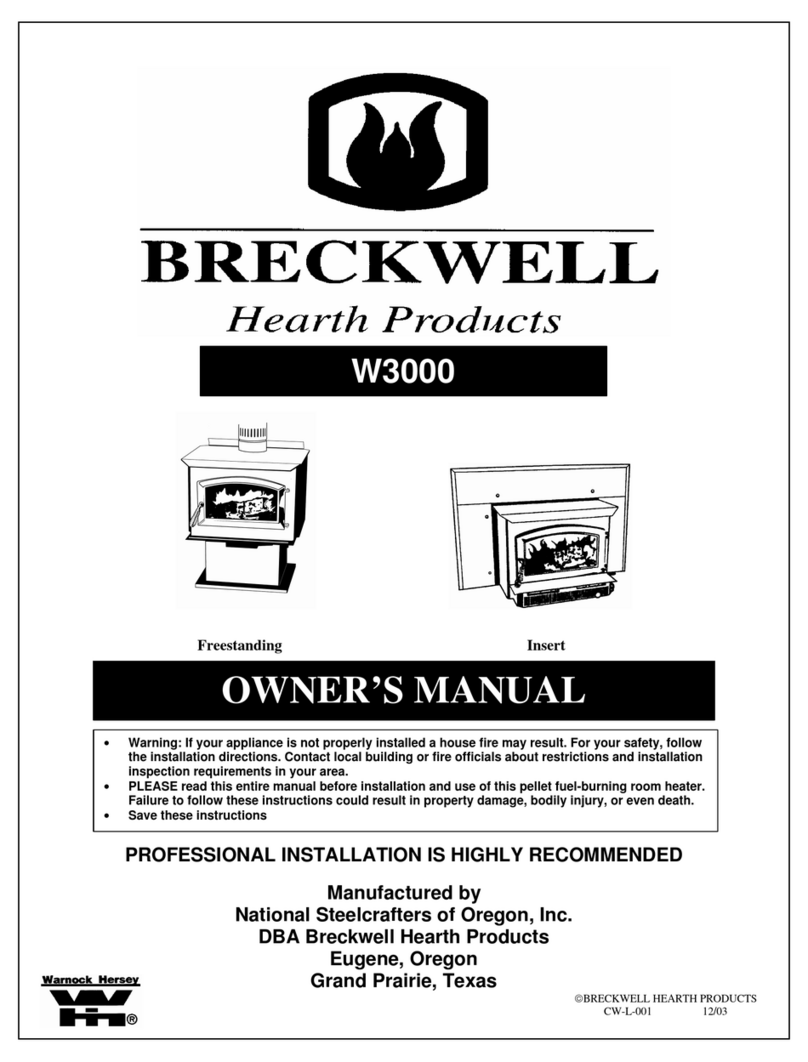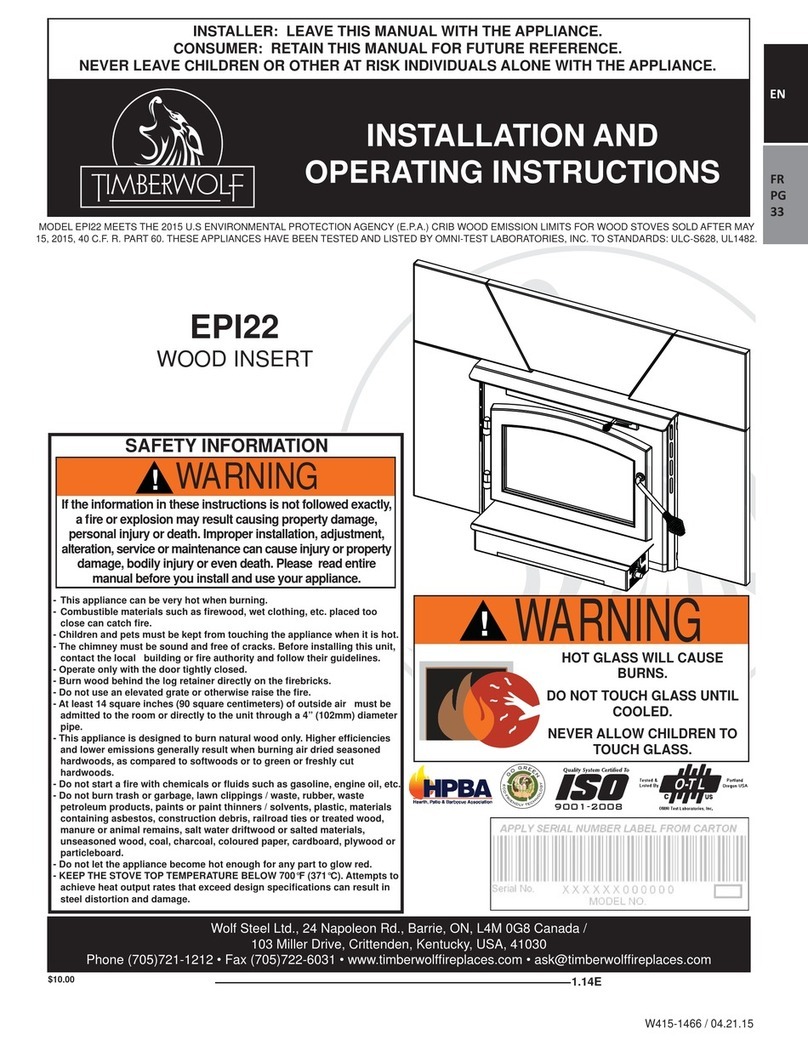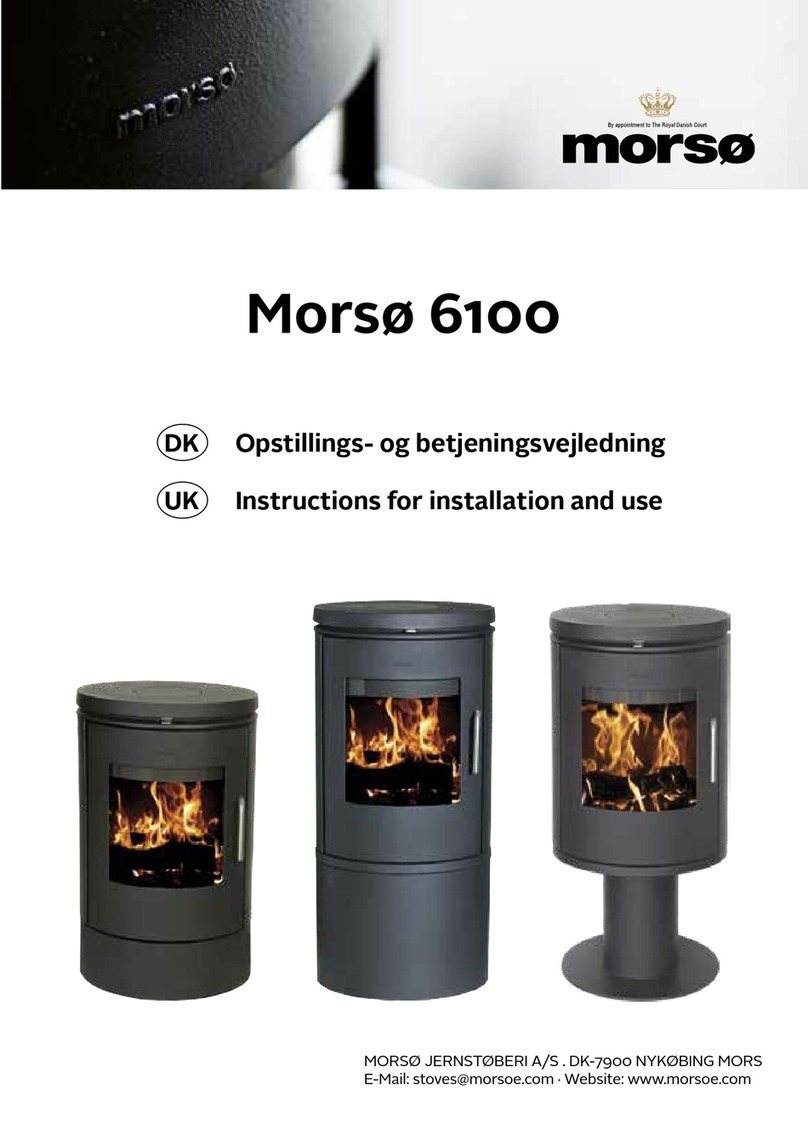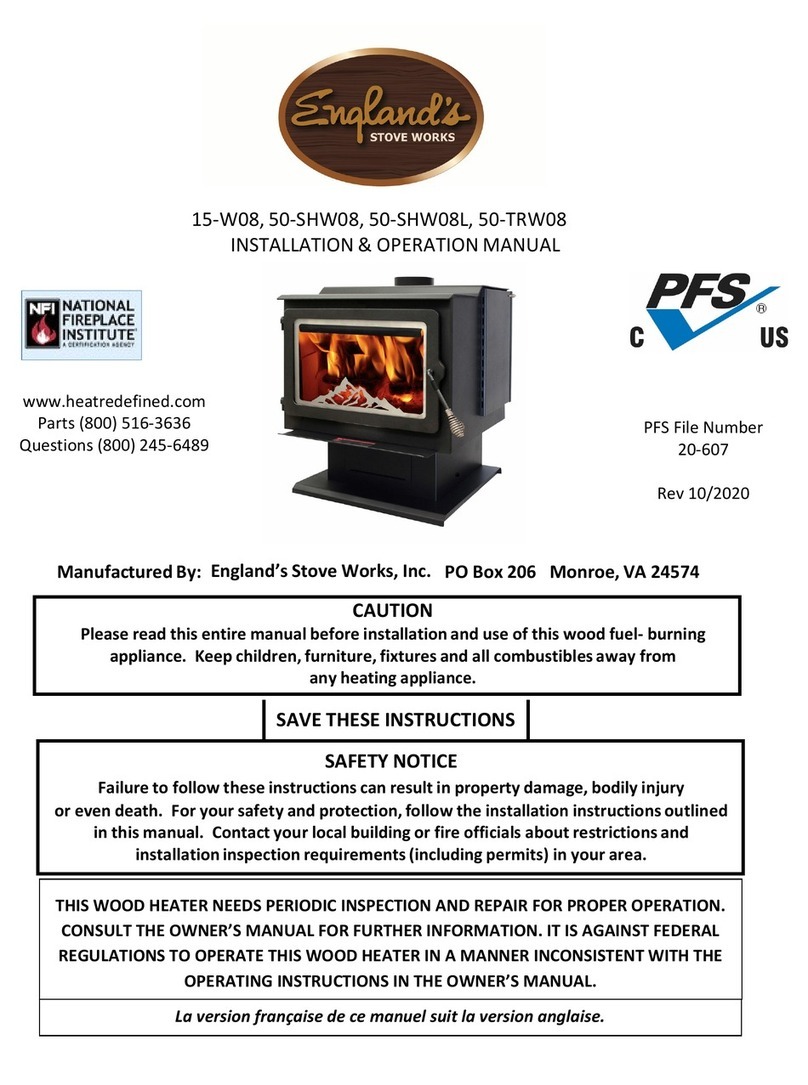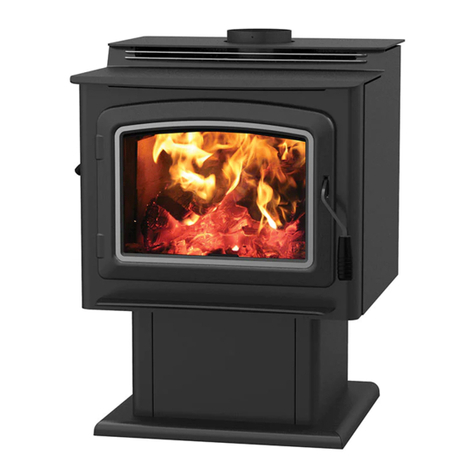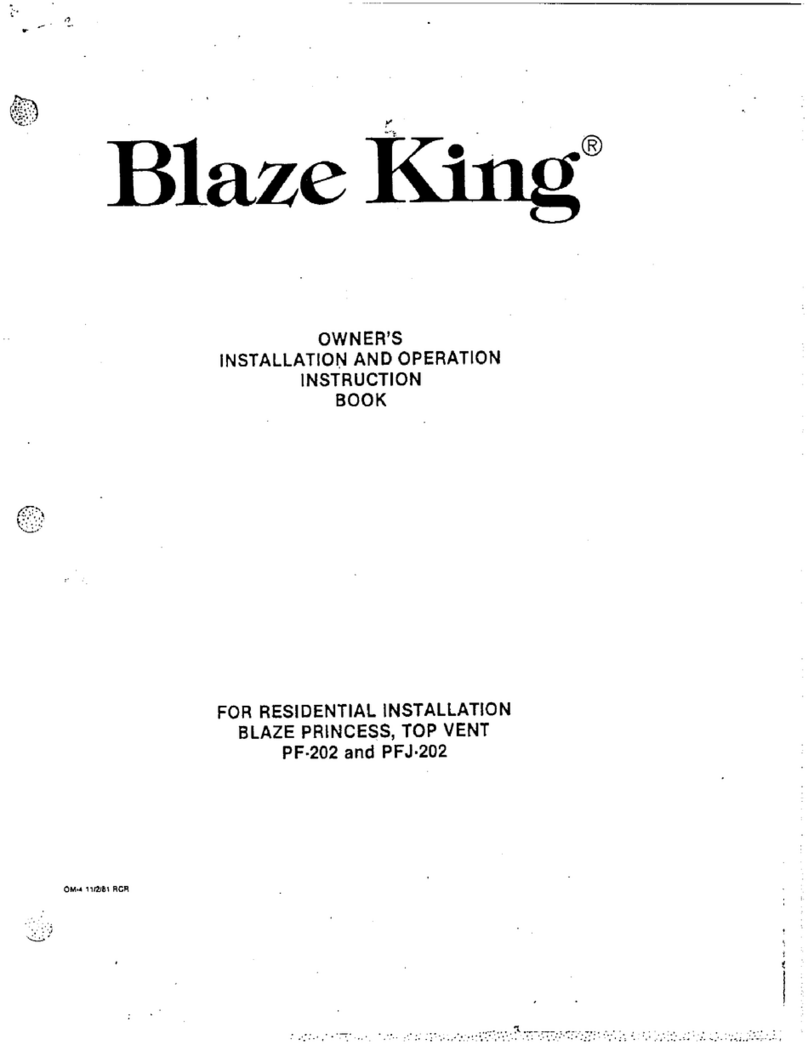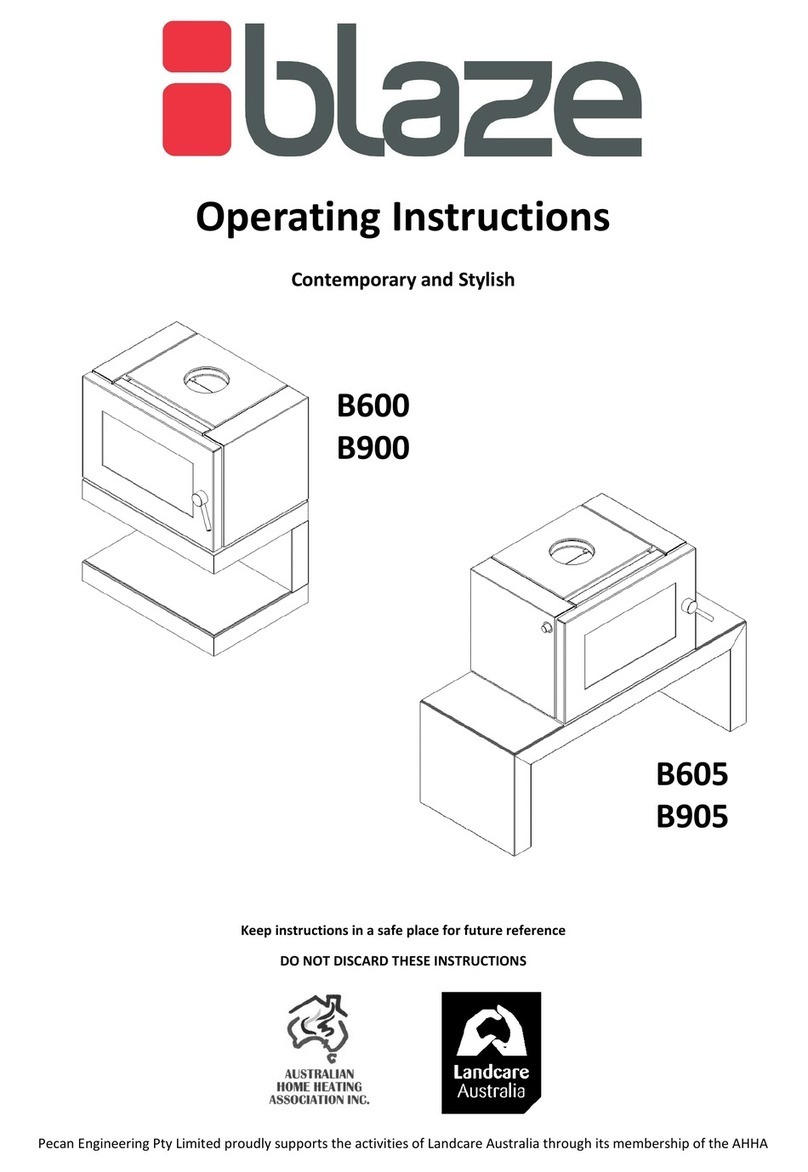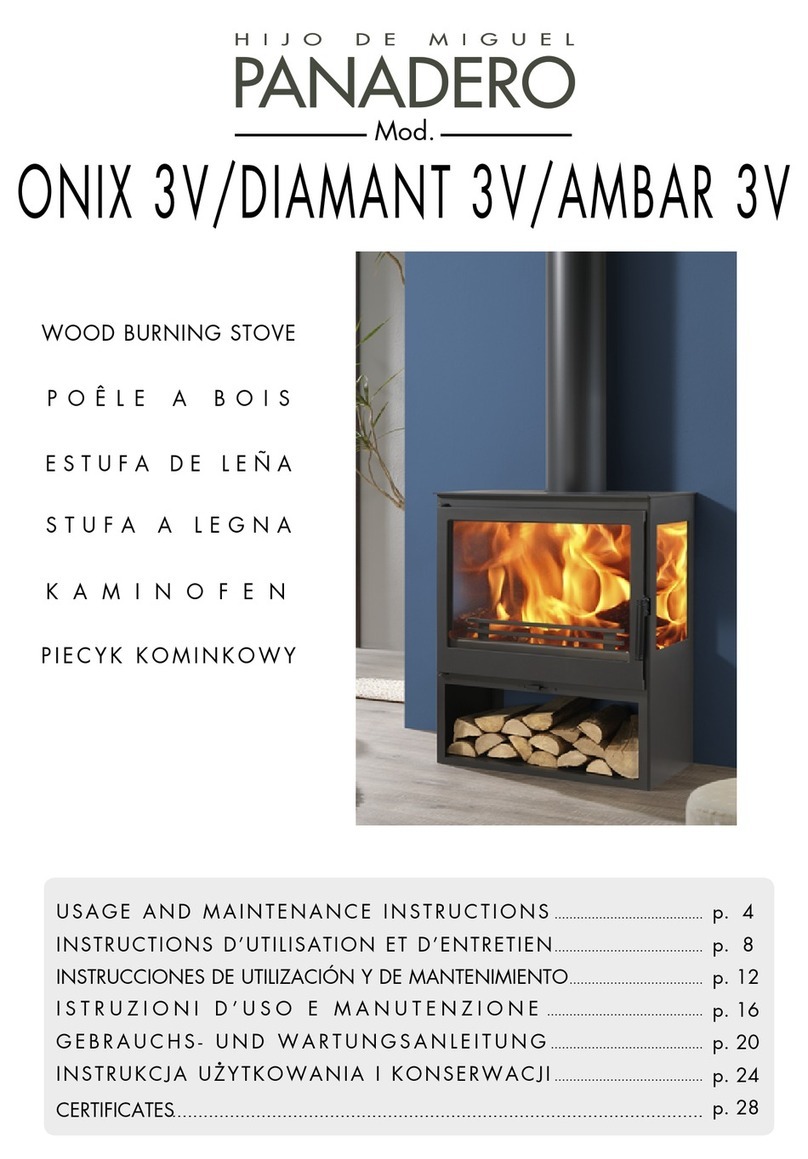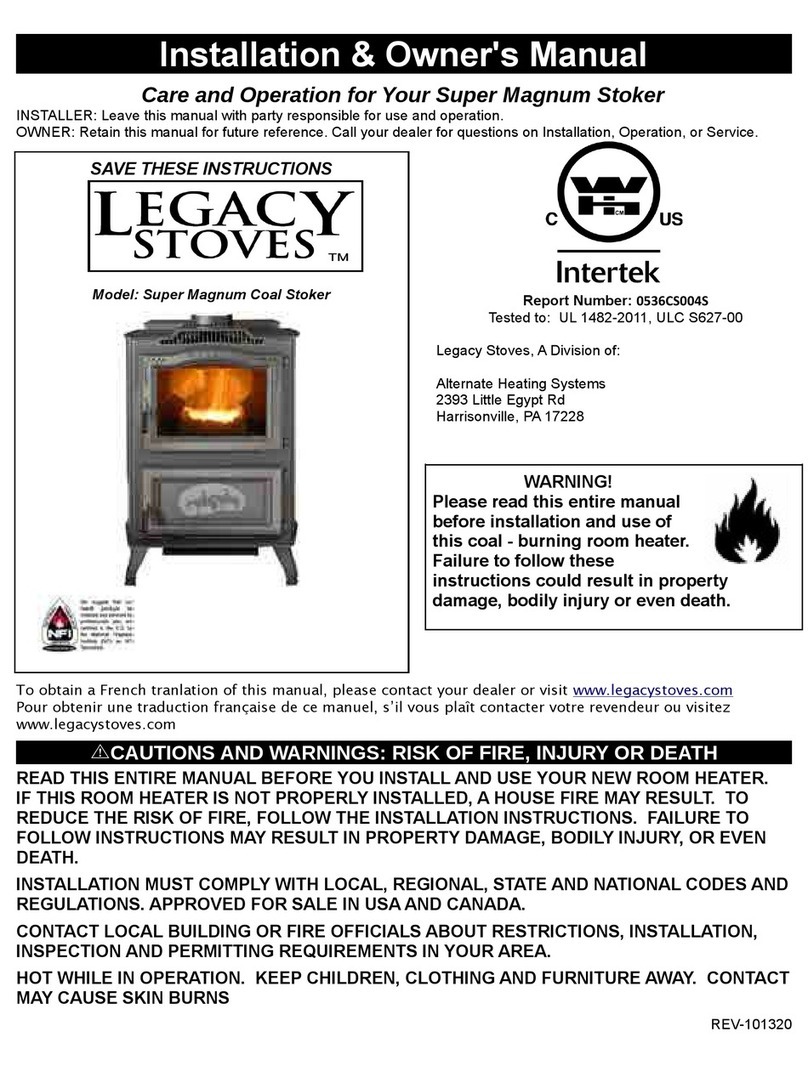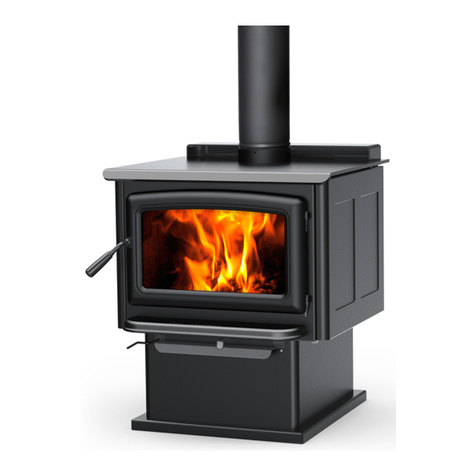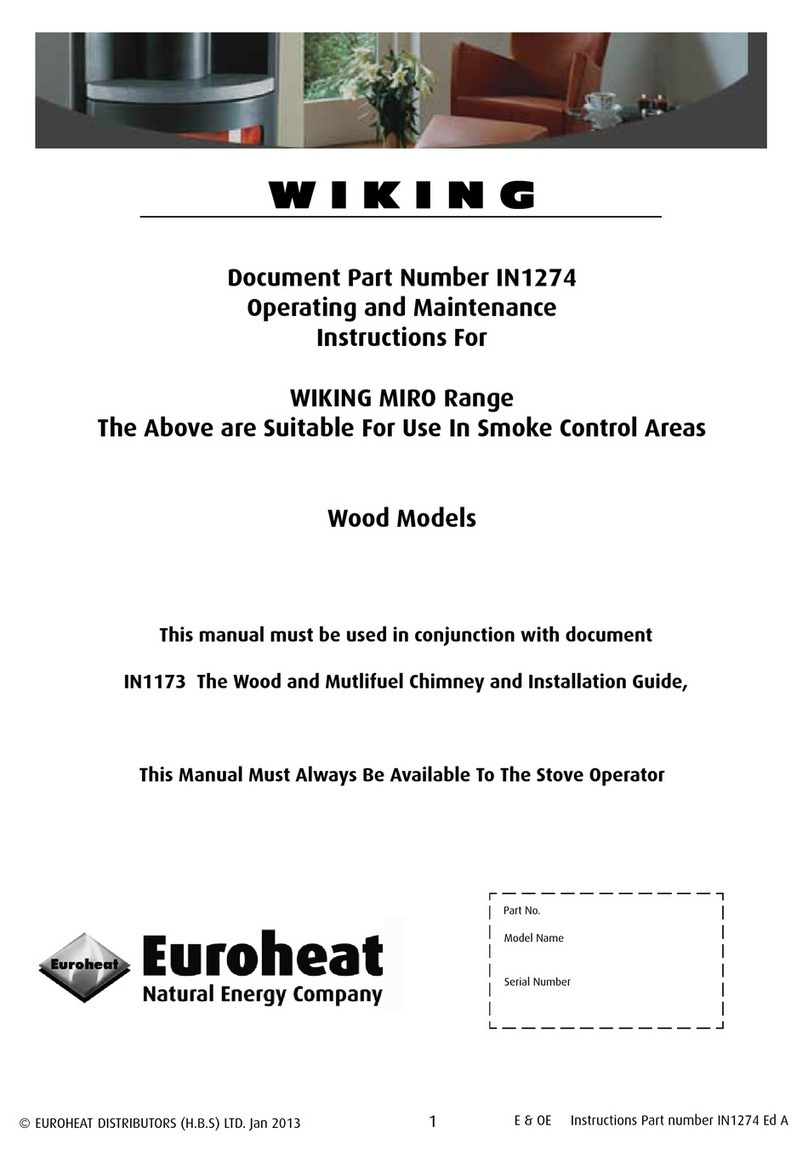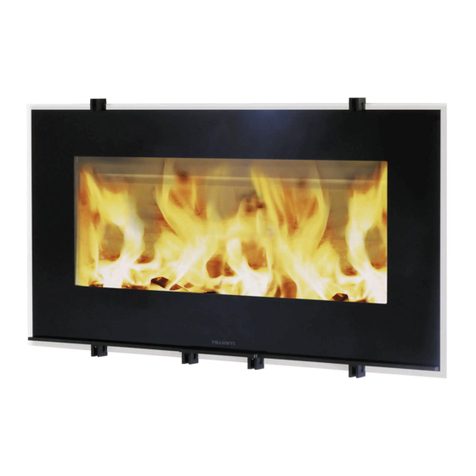
Exception TL200 WoodStove
17
The HarmanException may be installed with a
minimum of (150 mm) 24 gauge chimney connector
pipe. Size of the connector should correspond to the
size of the flue collar opening. Do not use makeshift
compromises. No partof thechimney connectormay pass
throughanattic or roofspace, closet orother concealed
space, or througha flooror ceiling. Whenever possible,
avoidpassingtheconnectorthrougha combustiblewall;if
youmust,use anapprovedwallpass-through, described
later inthis section.
Assembletheconnector beginningat theflue col-
lar, with the crimpedends pointing towards the stove (to
keep debris and creosoteflakes inside the system). Each
joint, including the one to the stove’s flue collar and the
one to the chimney itself should be secured withat least
three sheet metalscrews. Screws may be a maximumof
3 inches apart. A1-1/4" (30 mm) overlap is required at
each joint, including the flue collar attachment. No more
thantwo 90 degree elbows shouldbe used, and the total
length of connector shouldnot exceed10 feet (3 m). All
horizontal runs of connector must have a minimum up-
wardslope of1/4"(6 mm)per foot(20 mmper meter).
Wall Pass-throughs
Occasionally itis necessaryto pass the chimney
connector through a combustible wall to reach the chim-
ney. Dependingonyourlocalbuildingcodes, andthe per-
tinentprovincialornationalcodes,there areseveralchoices
for accomplishing this safely. Before beginning your in-
stallation,contactlocalofficials, andalso thechimney con-
nectorandchimneymanufacturer forspecific requirements.
Canada. Threemethods areapprovedbythe Cana-
dianStandardsAssociation. Thediagramshowsonemethod
requiringan18"(450 mm)airspacebetweentheconnector
andthewall. Itallowsuse ofone ortwo coversas described
in the diagram. The two other methods are described in
detail in the current issue of CAN/CSA B365, the national
standard.
UnitedStates IntheU.S.,thenationalcodeis NFPA
211. Whilemany localitiesadopt this standard, be sure to
checkwithlocalauthorities beforebeginningyour installa-
tion. TheNFPA(NationalFireProtectionAssociation)per-
mitsfourmethodsforpassingthroughacombustiblewall. A
commonly usedmethodto pass througha walldirectly to a
masonry chimneyis toclearaminimum12"(300mm)around
the entire chimney connector, andfill it with brickmasonry
which is at least 3.5"(90 mm) thick. Afireclay liner, mini-
mum3/8" (9 mm) wallthickness must runthrough thebrick
walltothechimneyliner(butnotbeyondtheinnersurfaceof
the liner). Itmust be cemented inplace withrefractory ce-
ment. This methodis illustrated. For details on the other
threeoptions, refer to the most recent edition oftheNFPA
211code.
Venting
Chimney Connectors and Chimneys
Draft
Draft is widely misunderstood. It is important that
you, the stoveoperator, realize that draftis a variable ef-
fect, not a given quantity. Stoves and chimneys do not
have draft, yet draft is the key to your stove’s performance.
Draft is a force, produced by an operating stove
andthe chimney to which it is attached. It is created by
hot gases rising upthe chimney, creatinga pressure dif-
ference betweenthe inside of yourhome andtheoutside
air. Itcontinually movesfreshcombustionair intothe stove,
andhot exhaustgases outof the stove; withoutthis con-
stant flow, the fire willgo out.
Otherfactors, suchas barometric pressure, winds,
the air tightness of the home, the total inside chim-
ney volume, chimney height andthe presence of vent-
ing devices such as exhaust fans also play a role in
maintaining an adequate draft. Low barometric pres-
sures, super insulated homes and exhaust fans can
reduce draft; winds can play havoc with draft; and
too large or too small a chimney volume can cause
reduced draft due to the excessive cooling or not
enough room to vent exhaust gases quickly.
Introducing outside air directly to the stove may help
remedy a low draft prblem. Some signs of inadequate
draft are smoking, odor, difficulty in maintaining the
fire, and low heat output. Overdraft can be caused
by a very tall chimney even if it is the recommended
size, and can cause overfiring of your stove. Signs
of an overdraft include rapid fuel consumption, inabil-
ity to slow the fire, and parts of the stove or chimney
connector glowing red. It is important that you fol-
low the chimney guidelines in this manual, including
size, type, and height to avoid draft problems.
Other causes of poor ventilation or draft are icing,
exhaust fans, a blocked outside air inlet, and room air
starvation. If your stove is sluggish and you get occa-
sionalodor, checkthese possibilitiesand increase the air
flow inyour home.
Wheninstalled andoperated accordingto this
manual, theExceptionwillproduce enoughhot gases to
keep the chimney warmso that adequatedraft is
maintainedthroughout theburn cycle.
Chimney Connectors
In general, following these guidelines will en-
sure compliancewith allnational and provincialcodes;
prior to beginningyour installation, check withyour lo-
cal building code official to check on additional local
regulations which may influence the design and place-
ment of your venting system.




















